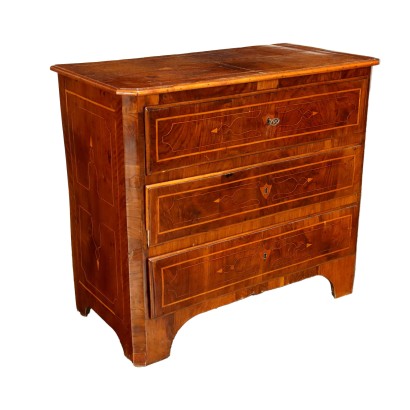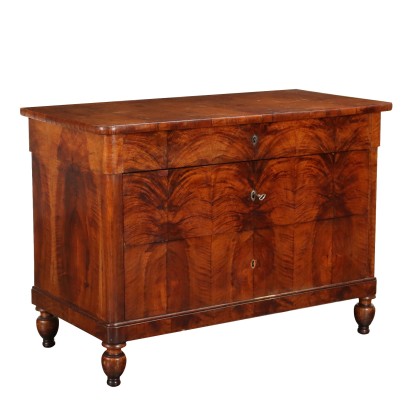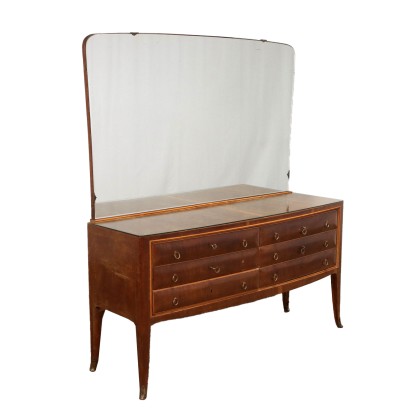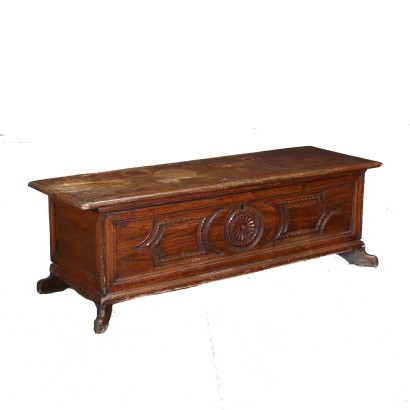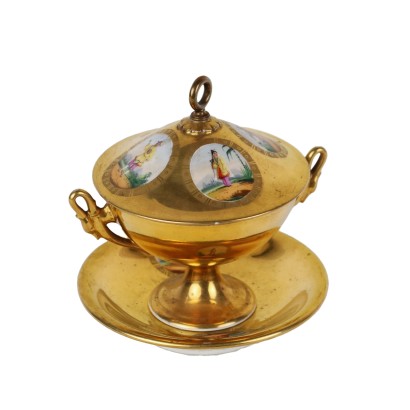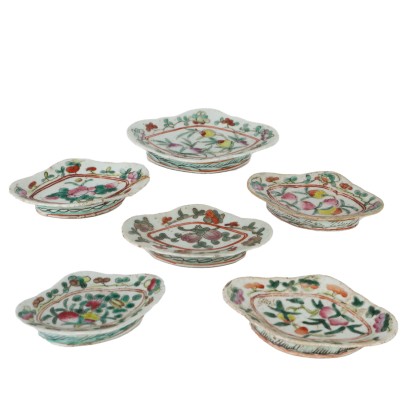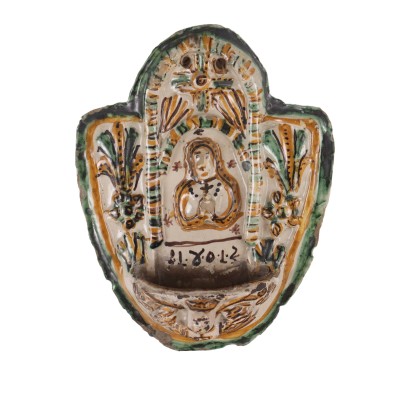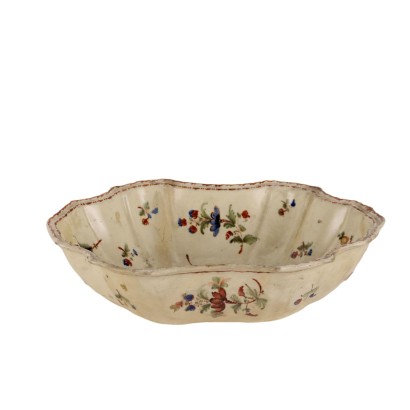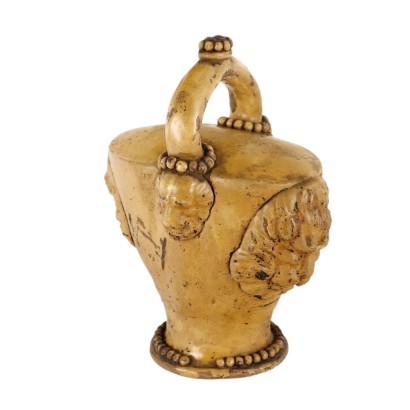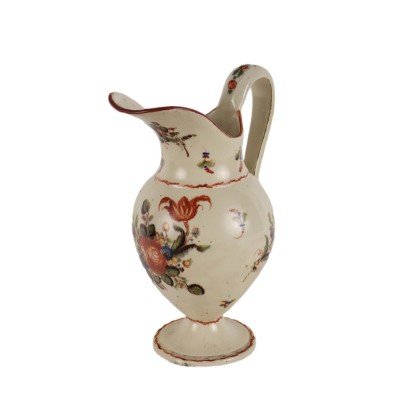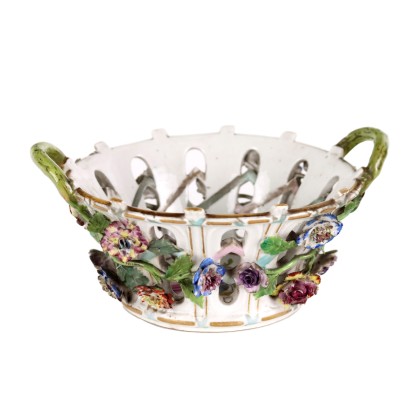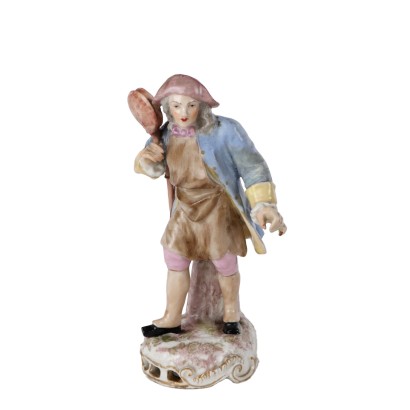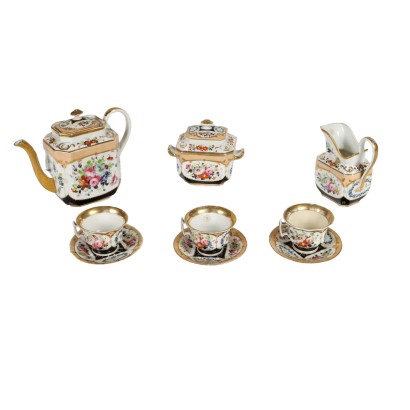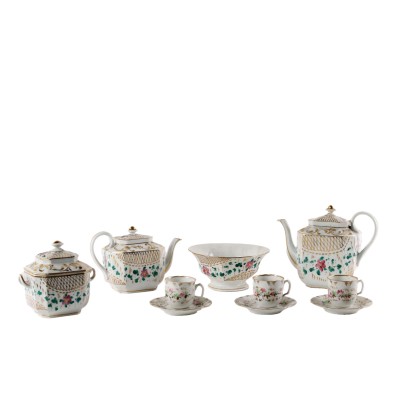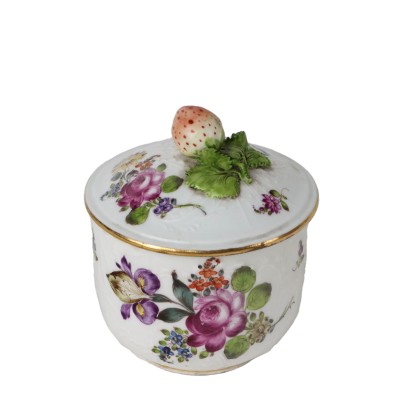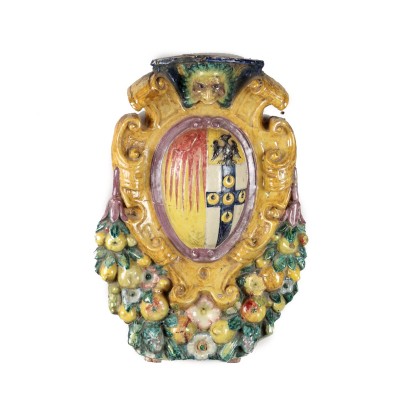Small Chest of Drawers Neoclassical Style Walnut Italy XIX Century - Italy First Quarter 19th Century
Features
Italy First Quarter 19th Century
Age: 19th Century / 1801 - 1900
Origin: Italy
Main essence: Maple , Walnut , Poplar
Material: Walnut Slab , Inlaid Wood
Description
Small piece of furniture in neoclassical style in poplar and walnut slab, Italy, first quarter of the 19th century. Front with 3 drawers, uprights at 45°, bracket feet. Inlaid and threaded maple on top, front and sides. Replacement of the bottom, frames and slabs during the restoration phase. Later embellished.
Product Condition:
Product that due to age and wear requires restoration and re-polishing. We try to present the real state of the furniture as fully as possible with photos. If some details are not clear from the photos, what is reported in the description will prevail.
Dimensions (cm):
Height: 83
Width: 94,5
Depth: 47
Additional Information
Age: 19th Century / 1801 - 1900
19th Century / 1801 - 1900 Main essence:
Maple
Hard, light wood used for inlays. It grows mainly in Austria, but it is widespread throughout the northern hemisphere, from Japan to North America, passing through China and Europe. It is one of the lightest woods ever, tending to white, it is similar to lime or birch wood. The briar is used in the production of ancient secretaires .
Walnut
Walnut wood comes from the plant whose botanical name is juglans regia , probably originally from the East but very common in Europe. Light or dark brown in color, it is a hard wood with a beautiful grain, widely used in antique furniture. It was the main essence in Italy throughout the Renaissance and later had a good diffusion in Europe, especially in England, until the advent of mahogany. It was used for solid wood furniture and sometimes carvings and inlays, its only big limitation is that it suffers a lot from woodworm. In France it was widely used more than anything else in the provinces. In the second half of the eighteenth century its use decreased significantly because mahogany and other exotic woods were preferred.
Poplar
Essence considered "poor", it is a white wood, with yellowish or greyish shades, light and tender, which is easily damaged. It is used for rustic furniture or in the construction of furniture. The most valuable use it has had in the history of furniture is in Germany, in the 19th century, for veneers and inlays in the Biedermeier period. Material:
Walnut Slab
Inlaid Wood
Other customers have searched:



